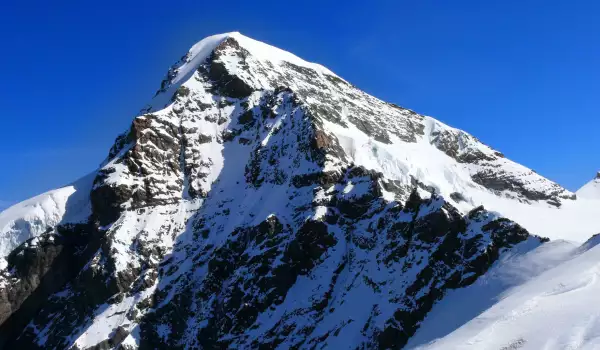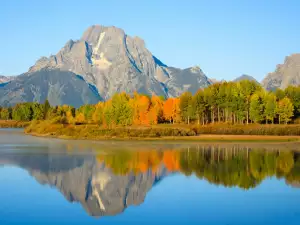Mount Eiger

Majestic views of Mount Eiger awaken emotions in the heart of any avid climber, unparalleled by anything else. Although not very high (almost 3970 m), Eiger is a challenge for many climbers. Ascent is not difficult, but extremely unpredictable and adverse weather conditions common. Throughout history, they have been the cause of many deaths. Chief culprit for them is the north slope of the Eiger, notorious as the Wall of Death. Even the sight of it can cause fear.
Mount Eiger, along with Mönch and Jungfrau is the pride of the Swiss Alps. Eiger is located near the Bernese Oberland and the Bern Alps, stands entirely in the Swiss canton of Bern. Eiger is the easternmost tip of the famous ridge formed along with the Mönch and Jungfrau peaks. It stands in the northeastern part, 5, 5 km northeast of Mount Jungfrau. The south side of the Eiger looks over the deep glacial Jungfrau-Aletsch area.
The first conquest of Mount Eiger is on August 11, 1858, when the west wall to the peak of the Eiger is climbed by Irishman Charles Barrington and Swiss guides from Grindelwald Christian Almer and Peter Bohren. Getting to the top of the Eiger in the winter of 1890 was Mead Uudrof with guides Christian Ulrich and Josie Kaufmann. The first woman was able to conquer the Eiger is a German mountaineer Daisy Foog in the company of Werner Bitner. This is between 1 and 3 September 1964 and is number 15 among the successful ascents of the wall.

Even today, the northern slopes of the Eiger are associated with conflicting feelings. In the 30s of last century, there was a great race for the conquest of Mount Eiger, on the northern slope. Because of some recent cases of deaths on the mountain, it is called the Wall of Death (Mordwand). The first successful ascent of the north wall is in 21 to 24 July 1938 by a German-Austrian group of mountaineers who began their ascent separately as two separate connections.
To it is offered easy passage through the highest passing transport in Europe - Jungfraubahn rail, which reaches 3454 m. It is at the highest station in Europe Jungfraujoch, located in the very high peak Jungfrau (4158 m). This is where climbers start to climb the north face of Mount Eiger (3970 m). Previously, the rail passes through a tunnel dug in the Eiger , in the center of the north wall of the Eiger was built a railway in 1903, with panoramic windows.
Today, the conquest of the Eiger is most often through the very beautiful east ridge, known as Mittellegi. It is the most popular route for climbing the peak, because it offers a very beautiful climbing sharp comb and a small risk factor from the Safety Authority. Its first ascent was made by Yuko Maki Fritz Amatter, Samuel Brawand and Fritz Steuri on September 10, 1921. Climbing to the top of Chalet Mitelegi which is located at the crest takes up to 8 hours.















